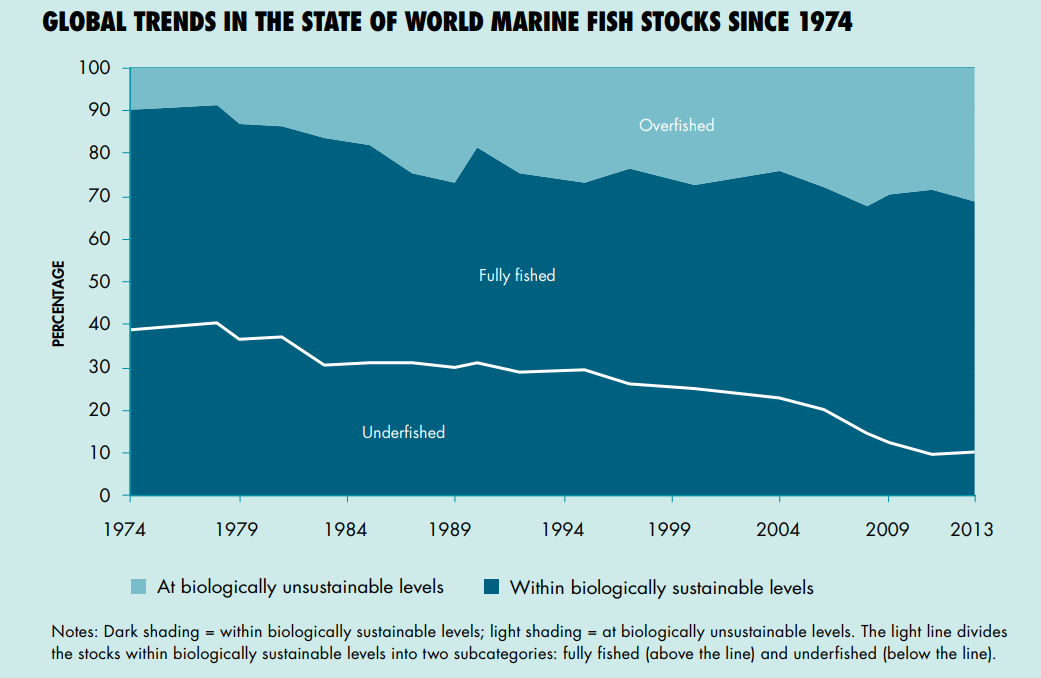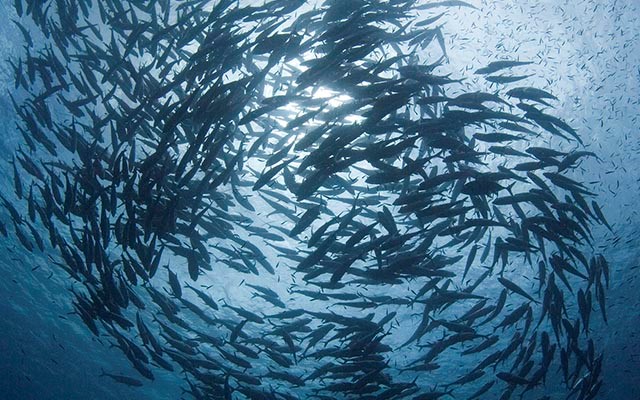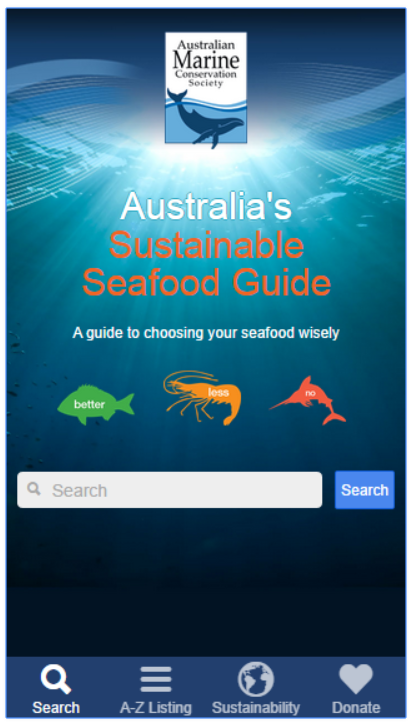The need to feed a growing global population, and to address a growing demand for fish, puts pressure on natural fisheries and on aquaculture (HLPE, 2014). With over a billion people dependent on the oceans for animal protein, the seas are often thought of as a never-ending seafood basket – pun intended (Society, 2017). With the global population expected to reach 9.7 billion in 2050, it’s vitally to sustainably harvest wild-caught seafood and maintain healthy and productive fish stocks. Beyond ensuring food security and nutrition to a large human population, healthy fish stocks are fundamental to healthy marine ecosystems. This paper aims to introduce “sustainable fisheries”, the Food and Agriculture Organisation of the United Nations (FOA) Code of Conduct for Responsible Fisheries and to give an insight into how we as Australians can their part to help.
Sustainable Fisheries – What is the code?
 In simple terms, a sustainable fishery is one whose practices can be maintained indefinitely without reducing the targeted species ability to maintain its population at healthy levels, and without adversely impacting on other species within the ecosystem – including humans – by removing their food source, accidentally killing them, or damaging their physical environment (Greenpeace, 2008).
In simple terms, a sustainable fishery is one whose practices can be maintained indefinitely without reducing the targeted species ability to maintain its population at healthy levels, and without adversely impacting on other species within the ecosystem – including humans – by removing their food source, accidentally killing them, or damaging their physical environment (Greenpeace, 2008).
In 1995, the FOA of the United Nations adopted the Code of Conduct for Responsible Fisheries, the code consists of a collection of principles, goals and elements for action. The code is voluntary rather than mandatory, with the governments, in cooperation with their industries and fishing communities responsible for implementing the code.
The Code advocates that countries should have clear and well-organized fishing policies in order to manage their fisheries. These policies should be developed with the cooperation of all groups that have an interest in fisheries, including the fishing industry, workers, environmental groups and other interested organizations.
 Where cooperation among countries in fishery conservation and management is necessary because fishery resources are shared among countries, the Code calls for new regional fishery organizations to be established or for existing organizations to be strengthened. Cooperation in this way is the only realistic approach to achieving long-term goals. The role of regional fishery organizations is considered further in the section relating to Regional and International Cooperation. It is important that fishing industries at all levels operate within a clear fisheries management and legal framework so that everyone involved in fisheries has a clear understanding of the rules to be followed.
Where cooperation among countries in fishery conservation and management is necessary because fishery resources are shared among countries, the Code calls for new regional fishery organizations to be established or for existing organizations to be strengthened. Cooperation in this way is the only realistic approach to achieving long-term goals. The role of regional fishery organizations is considered further in the section relating to Regional and International Cooperation. It is important that fishing industries at all levels operate within a clear fisheries management and legal framework so that everyone involved in fisheries has a clear understanding of the rules to be followed.
Through the successful implementation of the code by all parties involved it can be expected that fish and fisheries products will be available for consumption by present and future generations. If the world unites in pursuing responsible fishing practices, there will be ample fish supplies for many generations to come.
So how are we doing down under?
According to the CSRIO (CSRIO, 2017) Australian fisheries are among the best managed in the world. While it’s certainly true that we have better management in place than some other countries, international fisheries management is hardly stellar. And even though Australia has the third largest Marine Exclusive Economic Zone” (the area of ocean that we manage), our waters are quite low in nutrients and don’t hold a huge abundance of fish. This means we need to get the sustainability of our fisheries right the first time, and don’t have the luxury of trial and error. Management changes introduced by the Australian Government and the fishing industry since 2006 have achieved more sustainable fish stocks and improved profits in most Commonwealth fisheries.
 As consumers, we can choose seafood from well-managed, sustainable fisheries. To do so, we should educate ourselves about where our fish comes from and how it is caught. Resources such as the Seafood Decision Guide can help us make the best choices for our ocean’s future. There is also a free app available for download called the Sustainable Seafood Guide. This app is designed to help make informed seafood choices and play a part in swelling the tide for sustainable seafood in Australia (sustainableseafood.org, 2017). So if you are concerned about overfishing and its impact on our oceans, you can do something about it! Take a step in the right direction today, one person can make a difference.
As consumers, we can choose seafood from well-managed, sustainable fisheries. To do so, we should educate ourselves about where our fish comes from and how it is caught. Resources such as the Seafood Decision Guide can help us make the best choices for our ocean’s future. There is also a free app available for download called the Sustainable Seafood Guide. This app is designed to help make informed seafood choices and play a part in swelling the tide for sustainable seafood in Australia (sustainableseafood.org, 2017). So if you are concerned about overfishing and its impact on our oceans, you can do something about it! Take a step in the right direction today, one person can make a difference.
If you or your business is interested in discussing how you can get involved in helping sustain our oceans, please visit us at www.integratesustainability.com.au, call (08) 9468 0338 or email enquiries@integratesustainability.com.au.
Download PDF: ISPL Insight – Sustainable Fisheries
Bibliography
CSRIO. (2017). Sustaining Australian Fisheries. Retrieved from CSRIO: https://www.csiro.au/en/Research/OandA/Areas/Marine-resources-and-industries/Sustaining-Australian-fisheries
FAO, U. (2016). 2016 The State of World Fisheries and Aquiculture. Contributing to food security and Nutrition for all. UN FAO (pp. 40-41). ROME: UN FAO.
Greenpeace. (2008). Greenpeace Criteria for Sustainable Fisheries. Fact Sheet.
HLPE. (2014). Sustainable Fisheries and Aquaculture for Food Security and Nutrition. A Report by the High Level Panel of Experts on Food Security and Nutrition of the Committee on World Food Security. Rome.
Society, A. M. (2017). Fisheries. Retrieved from Australian Marine Conservation Society: https://www.marineconservation.org.au/pages/fisheries.html
sustainableseafood.org. (2017). Australia’s Sustainable Seafood Guide. Retrieved from sustainable Seafood: http://www.sustainableseafood.org.au/

